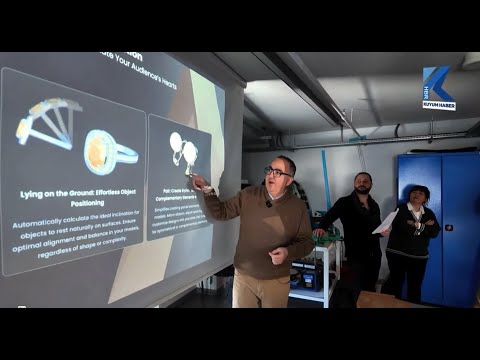Your Cart is Empty
Customer Testimonials
-
"Great customer service. The folks at Novedge were super helpful in navigating a somewhat complicated order including software upgrades and serial numbers in various stages of inactivity. They were friendly and helpful throughout the process.."
Ruben Ruckmark
"Quick & very helpful. We have been using Novedge for years and are very happy with their quick service when we need to make a purchase and excellent support resolving any issues."
Will Woodson
"Scott is the best. He reminds me about subscriptions dates, guides me in the correct direction for updates. He always responds promptly to me. He is literally the reason I continue to work with Novedge and will do so in the future."
Edward Mchugh
"Calvin Lok is “the man”. After my purchase of Sketchup 2021, he called me and provided step-by-step instructions to ease me through difficulties I was having with the setup of my new software."
Mike Borzage
ZBrush Tip: Maximizing Sculpting Efficiency with Dynamesh in ZBrush
August 21, 2024 2 min read

When working on detailed sculpting projects in ZBrush, efficient use of Dynamesh can significantly streamline your workflow and enhance sculpting flexibility. Dynamesh is an essential feature designed to remove limitations posed by the base mesh topology, allowing artists to focus purely on their creative process rather than the technical constraints. Here are some tips to maximize the utility of Dynamesh:
- Understanding Dynamesh: Dynamesh dynamically redistributes polygons across the surface of your model as you sculpt. This ensures a uniform distribution of polygons, which is crucial when you're adding or subtracting large volumes of geometry.
- Adjusting Resolution: The resolution slider in the Dynamesh panel determines the density of the mesh. Start with a lower resolution to block out primary forms and gradually increase the resolution as you move to finer details. This hierarchical approach helps maintain performance and keeps the process efficient.
- Subtraction and Addition: Use the Insert Mesh (IMM) brushes and the Boolean operations to add or subtract geometry seamlessly. Hold down the Ctrl key while dragging with the standard brush to create complex shapes within your mesh. Use the Ctrl + Alt keys to subtract.
- Maintaining Detail: Be mindful of the "Project" feature in Dynamesh. This helps project the details from your previous mesh onto the newly Dynameshed topology. This ensures that you don’t lose any sculpted details when remeshing.
- Polygroups: Use Polygroups in conjunction with Dynamesh for better control. Isolate parts of your mesh using Polygroups to have more localized remeshing. This is particularly useful for complex models with multiple components.
- Smoothing Transitions: The Smooth brush is your friend. After remeshing, use the Smooth brush to even out any irregularities in the geometry. This creates a clean and polished surface for further detailing.
- Edge Flow: Remember that Dynamesh is excellent for organic forms but can sometimes disrupt the edge flow on hard surfaces. For hard surface modeling, consider using Dynamesh initially and then switch to ZRemesher for better edge flow control.
Efficiently harnessing Dynamesh can significantly boost your productivity and allow for a freer, more creative sculpting process. For more advanced tips and professional resources on ZBrush, explore the tools and tutorials available on NOVEDGE. They offer a range of solutions tailored to digital artists.
Stay tuned to our social media for more tips and tricks to help you master ZBrush and elevate your digital sculpting skills. Happy sculpting!
You can find all the ZBrush products on the NOVEDGE web site at this page.
Also in Design News

💎 Rhino Artisan Arrives in Turkey: Revolutionizing Jewelry Design
February 27, 2025 1 min read
Read More
ZBrush Tip: Mastering Curve Surface for Unique Textures in ZBrush
February 27, 2025 2 min read
Read MoreSubscribe
Sign up to get the latest on sales, new releases and more …



